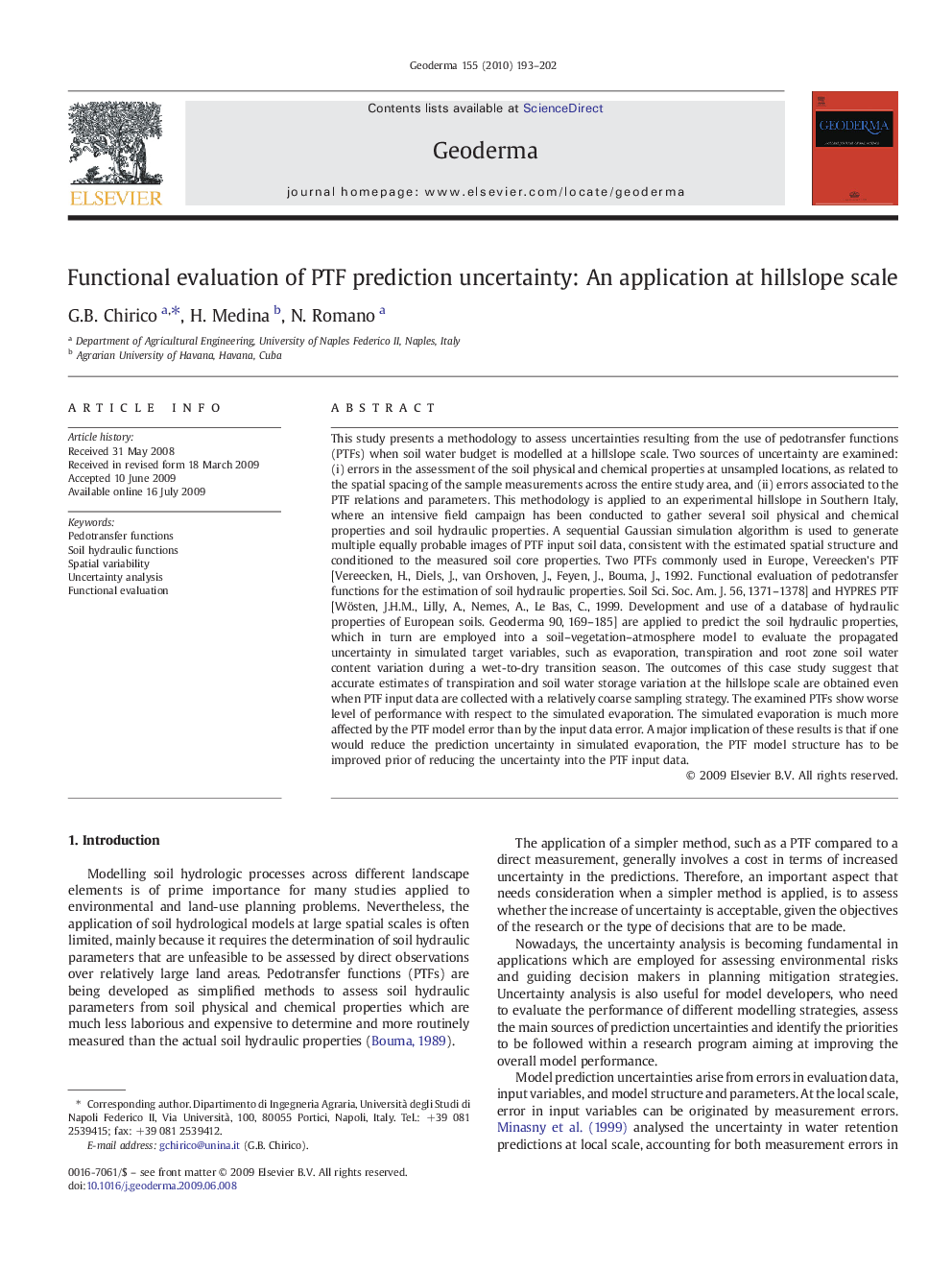| Article ID | Journal | Published Year | Pages | File Type |
|---|---|---|---|---|
| 4574675 | Geoderma | 2010 | 10 Pages |
This study presents a methodology to assess uncertainties resulting from the use of pedotransfer functions (PTFs) when soil water budget is modelled at a hillslope scale. Two sources of uncertainty are examined: (i) errors in the assessment of the soil physical and chemical properties at unsampled locations, as related to the spatial spacing of the sample measurements across the entire study area, and (ii) errors associated to the PTF relations and parameters. This methodology is applied to an experimental hillslope in Southern Italy, where an intensive field campaign has been conducted to gather several soil physical and chemical properties and soil hydraulic properties. A sequential Gaussian simulation algorithm is used to generate multiple equally probable images of PTF input soil data, consistent with the estimated spatial structure and conditioned to the measured soil core properties. Two PTFs commonly used in Europe, Vereecken's PTF [Vereecken, H., Diels, J., van Orshoven, J., Feyen, J., Bouma, J., 1992. Functional evaluation of pedotransfer functions for the estimation of soil hydraulic properties. Soil Sci. Soc. Am. J. 56, 1371–1378] and HYPRES PTF [Wösten, J.H.M., Lilly, A., Nemes, A., Le Bas, C., 1999. Development and use of a database of hydraulic properties of European soils. Geoderma 90, 169–185] are applied to predict the soil hydraulic properties, which in turn are employed into a soil–vegetation–atmosphere model to evaluate the propagated uncertainty in simulated target variables, such as evaporation, transpiration and root zone soil water content variation during a wet-to-dry transition season. The outcomes of this case study suggest that accurate estimates of transpiration and soil water storage variation at the hillslope scale are obtained even when PTF input data are collected with a relatively coarse sampling strategy. The examined PTFs show worse level of performance with respect to the simulated evaporation. The simulated evaporation is much more affected by the PTF model error than by the input data error. A major implication of these results is that if one would reduce the prediction uncertainty in simulated evaporation, the PTF model structure has to be improved prior of reducing the uncertainty into the PTF input data.
